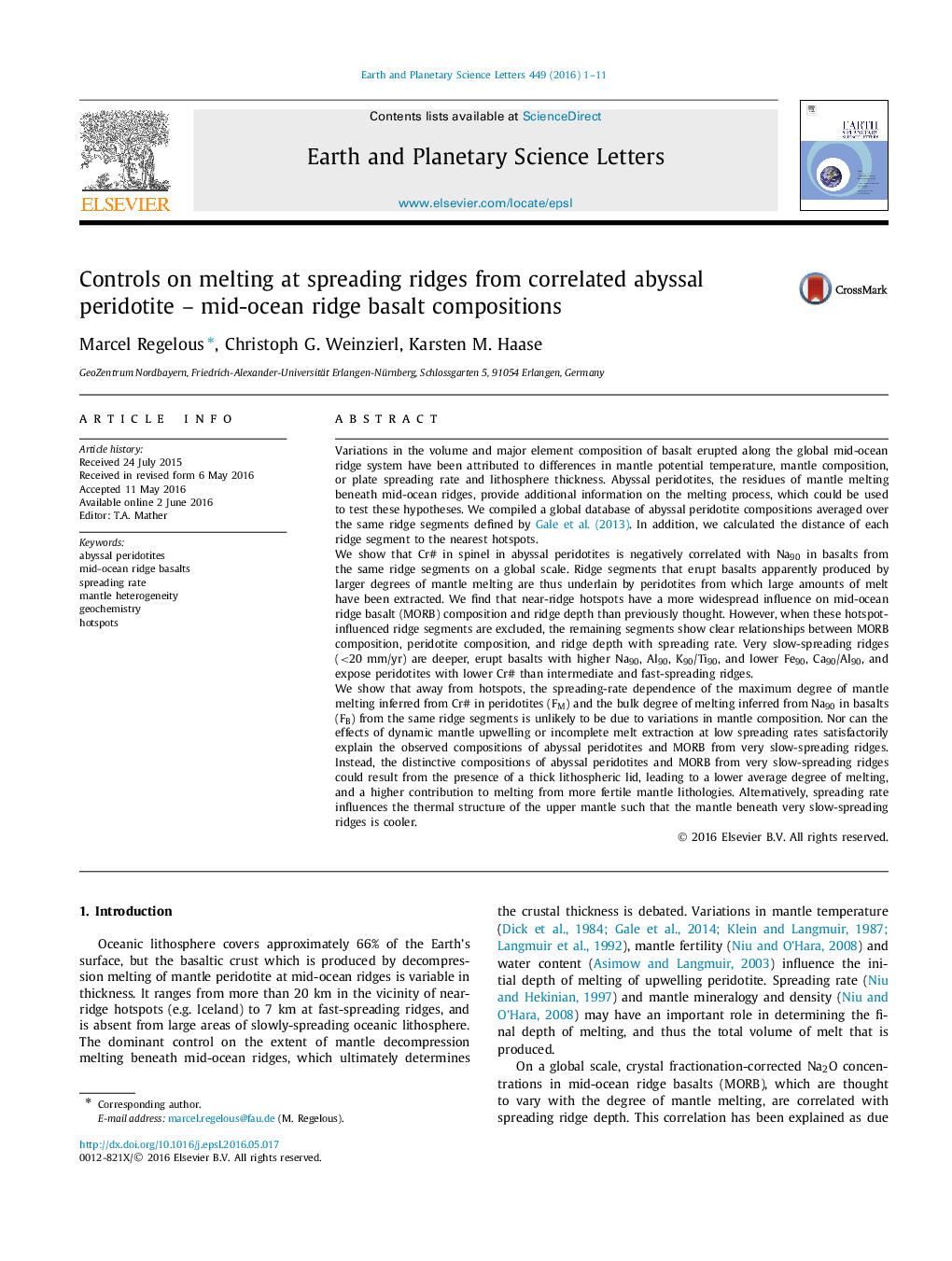| کد مقاله | کد نشریه | سال انتشار | مقاله انگلیسی | نسخه تمام متن |
|---|---|---|---|---|
| 6427358 | 1634707 | 2016 | 11 صفحه PDF | دانلود رایگان |

• We compiled a global database of abyssal peridotite compositions.
• Melting indicators in MORB and abyssal peridotites are correlated.
• High Na90, low Fe90 in MORB, low Cr# in peridotites from very slow-spreading ridges.
• Spreading rate may control how mantle lithologies are sampled during melting.
• Alternatively, spreading rate controls mantle temperature at low spreading rates.
Variations in the volume and major element composition of basalt erupted along the global mid-ocean ridge system have been attributed to differences in mantle potential temperature, mantle composition, or plate spreading rate and lithosphere thickness. Abyssal peridotites, the residues of mantle melting beneath mid-ocean ridges, provide additional information on the melting process, which could be used to test these hypotheses. We compiled a global database of abyssal peridotite compositions averaged over the same ridge segments defined by Gale et al. (2013). In addition, we calculated the distance of each ridge segment to the nearest hotspots.We show that Cr# in spinel in abyssal peridotites is negatively correlated with Na90 in basalts from the same ridge segments on a global scale. Ridge segments that erupt basalts apparently produced by larger degrees of mantle melting are thus underlain by peridotites from which large amounts of melt have been extracted. We find that near-ridge hotspots have a more widespread influence on mid-ocean ridge basalt (MORB) composition and ridge depth than previously thought. However, when these hotspot-influenced ridge segments are excluded, the remaining segments show clear relationships between MORB composition, peridotite composition, and ridge depth with spreading rate. Very slow-spreading ridges (<20 mm/yr) are deeper, erupt basalts with higher Na90, Al90, K90/Ti90, and lower Fe90, Ca90/Al90, and expose peridotites with lower Cr# than intermediate and fast-spreading ridges.We show that away from hotspots, the spreading-rate dependence of the maximum degree of mantle melting inferred from Cr# in peridotites (FM) and the bulk degree of melting inferred from Na90 in basalts (FB) from the same ridge segments is unlikely to be due to variations in mantle composition. Nor can the effects of dynamic mantle upwelling or incomplete melt extraction at low spreading rates satisfactorily explain the observed compositions of abyssal peridotites and MORB from very slow-spreading ridges. Instead, the distinctive compositions of abyssal peridotites and MORB from very slow-spreading ridges could result from the presence of a thick lithospheric lid, leading to a lower average degree of melting, and a higher contribution to melting from more fertile mantle lithologies. Alternatively, spreading rate influences the thermal structure of the upper mantle such that the mantle beneath very slow-spreading ridges is cooler.
Journal: Earth and Planetary Science Letters - Volume 449, 1 September 2016, Pages 1–11